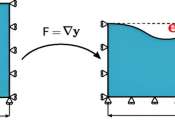How friction evolves during an earthquake
By simulating earthquakes in a lab, engineers at Caltech have documented the evolution of friction during an earthquake—measuring what could once only be inferred, and shedding light on one of the biggest unknowns in earthquake ...








